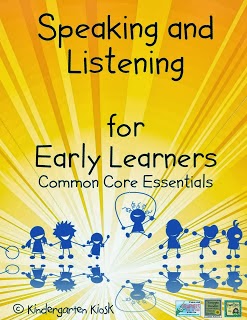If you've read any of Lyndsey's posts over on Mamma's Tots, you'll know that she believes (as do developmental experts) that the most important skill for young children is the development of their speech and language skills. Children with a large vocabulary and the ability to discuss events, ideas, and feelings clearly are better prepared for literacy than they would be by the study of the alphabet alone. This is because decoding words is only one part of the process of becoming a literate individual. Reading is a way of processing information and ideas, and if children are not already practiced in processing oral information, they will be overwhelmed by the task of processing written information (especially since they will also be learning to decode that information).
The best way to develop a child's language is by talking to them, but so often as parents and or teachers, we get caught up in "informational speech". And of course we do, because so much of a child's needs require "informational speech".
"Don't touch that"
"Go and get dressed"
"Did you brush your teeth?"
But "informational speech" doesn't develop language in the same way the "conversational speech" does. It is "conversational speech" that is the most important for children's learning. And it's the harder kind of speech to engage in because it goes beyond commands and short answers.
"If you could be an animal, what kind would you be? Why?"
"What is your favorite day of the week? Why"
Sometimes it's hard to come up with opportunities for "conversational speech" so we have developed some games and activities to help get young children talking. This packet contains 5 games and 2 activities for speech and language development.











